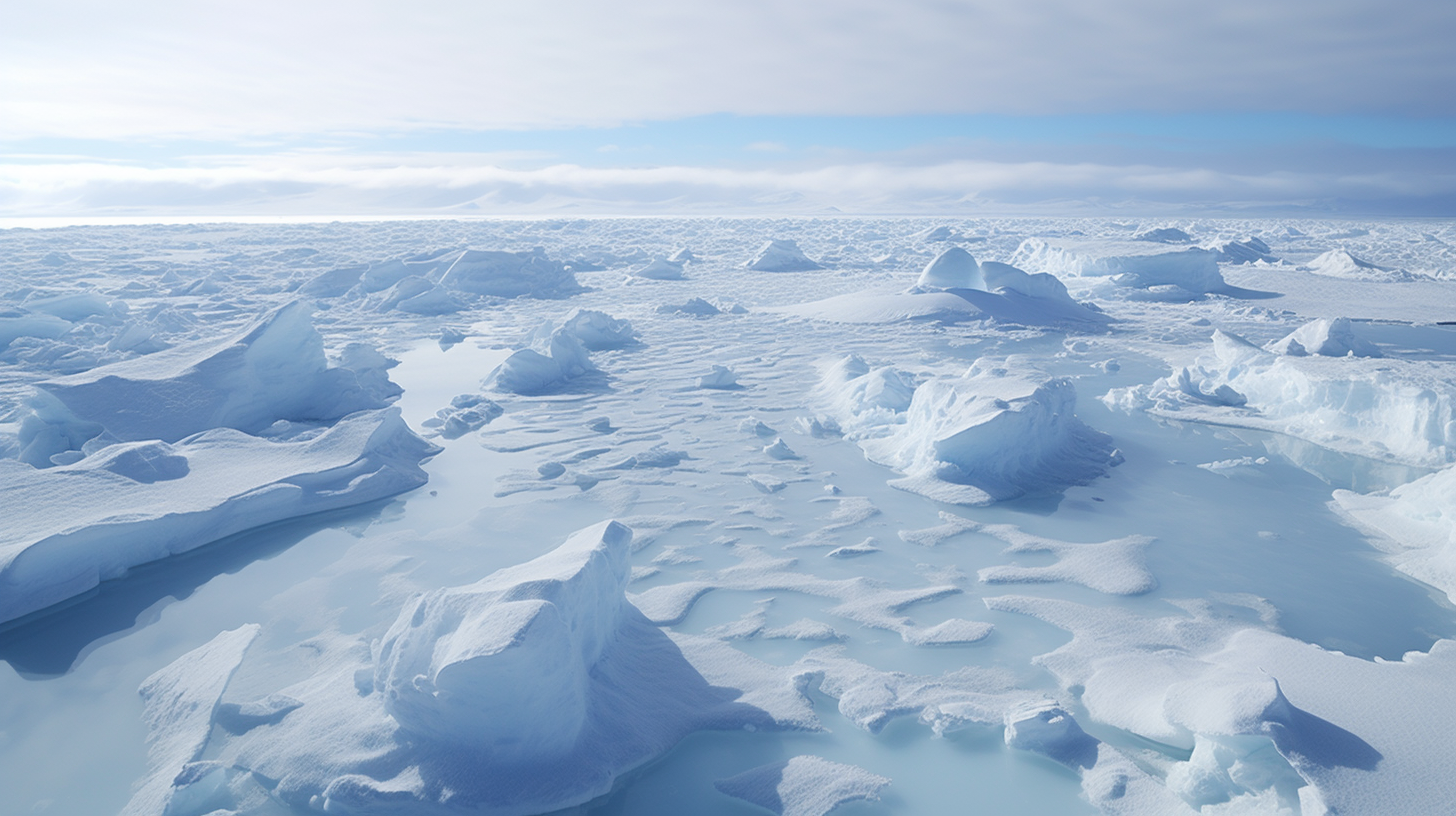In the shadow of a world where the cryosphere – that glacial armor that once enveloped our planet’s poles in pristine white – now succumbs to the voracious appetite of a warming atmosphere, the polar ecosystems balance on the precipice of annihilation. Drawing a chilling correlation to the spine-tingling narratives of ‘Fevered Tundra: The Paradox of Thawing Ice,’ and ‘When Glaciers Weep – Melancholy Meltdowns Reshaping Our World,’ our latest expedition into the Dystopian Present reveals the fragile state of life clinging to the ice.
Afflicted by the rising temperatures, the polar regions, once bastions of untamed wilderness and frozen purity, are transforming into barren wastelands. The dramatic dissolution of sea ice has left polar bears stranded on melting floes, their desperate search for food becoming a Sisyphean ordeal. The penguins’ cacophonic symphonies dwindle to haunting silence as their breeding grounds erode into the ocean’s insatiable maw.
Scientists, like the oft-quoted Dr. Yurovski, have warned us. Yet, the cascading events were swifter than anticipated. In the latest twist of fate, researchers are uncovering the mass starvation of seals, once the vibrant icons of Arctic waters, they now serve as a grim tableau of nature’s unchecked unraveling. As the mercury-laden waters rise, they bring not only a physical poisoning but an intellectual toxin – a reminder of the demise we’ve authored.
The consequences ripple beyond the ice. The melting pot of biodiversity is taking its last breath as unique microbial life forms that thrived in frigid isolation face extinction. Our most recent articles sought to evoke empathy for the cryosphere’s plight, yet these microbial extinctions suggest we’ve overlooked nuances in our planet’s environmental tapestry.
‘When Glaciers Weep’ lamented the reshaping of our world, and here, as if in a macabre dance, we bear witness to the final acts. Global currents, which once drew their breath from the polar heartbeat, are staggering under the strain of warm waters; our climate system is gasping for balance in this unimaginable transformation.
With a grave demeanor, this article probes the disintegration of the polar food web. The algae – those microscopic life-givers painting the underside of sea ice with hope – face eradication. Their departure signifies the crumbling foundation of a food chain that has nourished life in relentless extremes.
The irony of our era is not lost – as ice retreats, humanity advances – envisioning new trade routes through our planet’s freshly wounds, eager to exploit resources that were once shielded by nature’s frozen barricade. This relentless march borders on apocalyptic hubris; we gain ephemeral wonders at the cost of an eternal legacy.
In closing, this chapter of our chronicle does not sing of redemption, nor does it harbor illusory hope. Instead, it extends an invitation to peer into the abyss – to witness the end-of-days spectacle of the cryosphere’s collapse. A spectacle that commences not with a bang, but with the thunderous silence of falling snowflakes into a sea that no longer freezes.
This is the narrative we are implored to remember, to narrate to forthcoming generations. As the polar ecosystems endure on the edge, so do we stand on the brink – observers of an elegy, penned by our own hand, read by a silent audience of drowning worlds.
